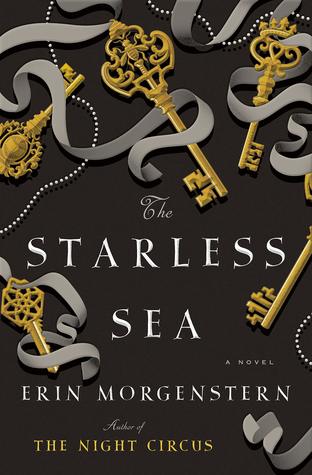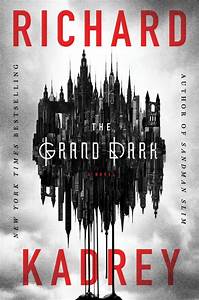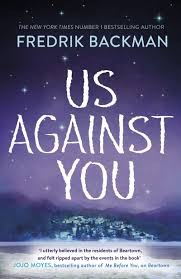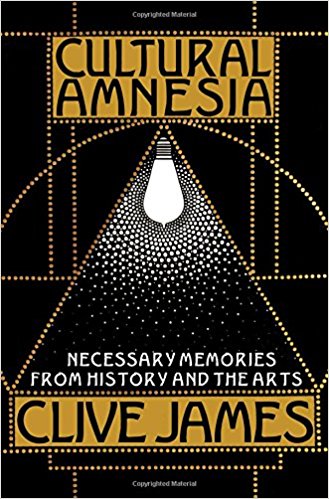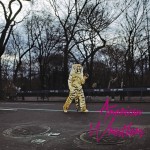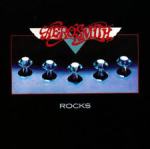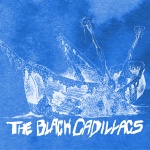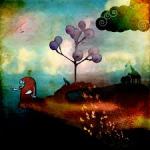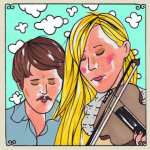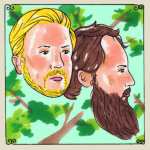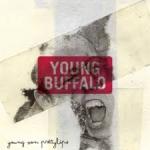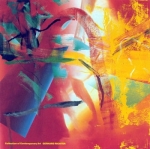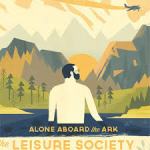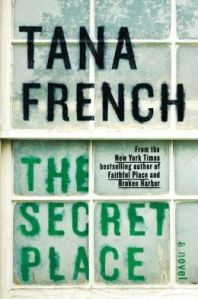Legend has it that Harry Houdini, arguably the greatest magician and escapologist in history and spiritualist hoaxbuster extraordinaire, used to wrap his upper and lower legs in tight adhesive bandages the night before attending a seance or other “supernatural” display. Just before arriving he’d tear them off, leaving both thighs and calves raw and ultra sensitive, able to feel the slightest under-the-table movements and thereby exposing the charlatans bilking the anguished, upper class would-be believers out of thousands of dollars and feeding their hopes of truly communicating with lost loved ones in the afterlife.
When I stopped taking the anti-depressants that I’d been on for years in an effort to combat various bouts of depression and anxiety that reared up only too often, I felt exactly like that: as if someone had torn off the body-length bandage I’d wrapped myself in as a shield against the world, and now my every nerve was exposed to the slightest breeze, the merest whiff of emotion scraping against me like salt in a wound, or an electrical circuit made complete.
Oddly enough and over time, I welcomed those charges for what they were: my emotional infrastructure reawakening, coming out from under the warm, comfortable eiderdown of the meds and back into the harsher sandpaper world. I didn’t know it at the time, but it was the beginning of my coming back to life, to waking up again in my early 50’s.
I’d started taking the mood-smoothers after telling my GP that I was, well… sad. All the time. I told her it was because of a recent breakup (then almost a year old,) and that’s what I told myself, too. After all, I reasoned, what if you finally found who you thought was your soulmate but they didn’t agree? That might account for such low moods and the tinge of blue that seemed to shade everything, right?
It didn’t take me long to label that breakup as more of a trigger than an underlying cause. What else could be driving this? I’d certainly “mourned” the dissolution of my family not quite ten years prior to this; I’d often told people that it had taken almost three years to come back to life after that, to poke my head above the fog of confusion and hurt that had surrounded me for so long. But had I fully acknowledged or explored all of those feelings, not just of misjudging the Love I’d imagined as being impregnable, unassailable between my ex-wife and me, but the forced separation of me and my girls? Those sweet, innocent girls that occupied such large parts of my heart and my soul?
Maybe I hadn’t.
Whatever the possible cause(s), I was down. My lifelong study of Eastern philosophies and religion had imbued in me a strong belief in the Wheel of Samsara, Karma, The Tao – all of the Zenned-out approaches to Life and Love and Thought. I know – believe through my own very real experience – that the universe moves in circular ways, and that the wheel moves up, around, and down for everyone. That there will be light after the dark, good after the bad, that the opposites will balance, and conjunction will occur – just not always at the pace or for the duration one might wish.
So while I knew with everything inside me that this moodiness, too, would pass – even if it did seem like it was taking an awfully long time – I wondered if there was something that may speed it along or make the wait a little less arduous. Thus my willingness to at least try the medicinal approach.
I’d always been a somewhat sensitive kid. Never labeled a “crybaby” (what could be worse, right?) I was nevertheless profoundly moved at the pain or discomfort of others, by a beautiful piece of music, a heartfelt movie or book that struck home in a powerful way.
Was there a hierarchy in the intensity of these feelings, based on the source? I’m not sure. It seems that the written word often hits harder, cuts more deeply, than does visual stimuli like movies and TV, but it’s really dependent on the individual content, I think. I can remember individual movies or TV shows that affected me strongly, as well as specific books and passages that left me just as touched, just as drained, emotionally.
Imagine my surprise and relief to find out around college age that there’s a word for describing at least some of that type of personality: lachrymose.
Again, it’s not a case of “cries too easily,” (which would also be the worst Indian name ever.) I took it to describe the responses I’d had almost ever since I can remember: an answer to emotional stimulus, real or manufactured, that caused tears to form in the corners of my eyes and emotion to well in my chest, heat to spread across my scalp from back to front, seemingly inexplicably. Rarely allowing them to fall, I could usually disguise the response with a cough or a sneeze or a quick swipe of the hand across my face, knowing – somehow – that my teen and twenty-something friends wouldn’t understand such a reaction, and that I didn’t want to, or didn’t know how to, try to explain it.
It also fit with my self-diagnosis that I am predominantly an introvert, and later with the Meyers-Briggs confirmation that I’m an INFP.
I’d also been a lifelong proponent of lucid dreaming, and interpreting them even when the lucidity was a little scarce. From a young age I had very intense dreams – many, but not all, nightmares or even what I later discovered were called Night Terrors. Around age 12 or 13, though, I read about lucid dreaming and thought I’d give it a go.
It took a long time, but eventually I was able to make a conscious decision to interact with the unconscious actions taking place in this magnificent dream world of mine. I’d been able to recognize that I was dreaming for a long while before I was able to affect any change. The first step towards interacting was simply being able to blink my eyes quickly whenever I wanted the dream to end, and I would wake up. Of course, if I went back to sleep too quickly I’d find myself right back into the thick of whatever scenario I’d been so anxious to escape; that still happens today.
Sometimes you wake up from a dream. Sometimes you wake up in a dream. And sometimes, every once in a while, you wake up in someone else’s dream. – Richelle Mead
But in one nightmare dreamscape around that 12th or 13th year – I remember it very vividly – I was being chased down the beach in Charleston by an almost cartoonish gorilla – it looked more like someone dressed in a bad gorilla suit than the real thing, but was nevertheless as menacing and scary as anything I’d ever encountered in a dream – when I realized that I was dreaming, and that I could stop this from going any further. I stopped running, slid to a sandy stop on the wet beach, and turned. It kept charging, so I held up both hands and COMMANDED it to stop. I remember wanting to shoot some sort of power beams out of my hands, or some sort of magic spell to disintegrate it – neither happened.
But it did stop.
I chased it away, the dream wisped apart like lace on the wind, and I slept the rest of the night through.
From then on I was able to practice making my responses and interactions more tangible and in line with what I imagined at the time. Those beams and magic spells started working, albeit never quite at the strength I intended. Flying, also, was extremely difficult at first; like that feeling everyone describes when in a nightmare where it feels like they’re trying to get away from the Big Bad but they can’t get started, like they’re running through mud, or syrup, or that something is holding them back. That’s how my first attempts at flying felt, too – like something was making gravity stronger, or was grabbing on and slowing me down, keeping me earthbound. Each “flap” of my arms or wings or whatever I happened to be made of in the dream would raise me up a bit, then a little more, but it was months until I could break those bonds and get any serious height or speed. Once I did get up there, it was like I’d escaped the ground, and I could zip like a bullet over any landscape I happened to be crossing.
As I got older and my studies into dreaming and altered states of consciousness grew more advanced, I continued to deepen the lucidity of my own dreaming world. I could even, to some extent – never perfect – plan or guide what or who I wanted to dream about as I was falling asleep.
So I enjoyed a very rich dream life, and even journaled it for several years while in later high school and early college. The journaling eventually stopped – unless I happened to have what Jung called a Big Dream, which happened on average about two or three times a year. The rest of the time I could tell that the dreams I was having were more of the house-cleaning, storage decisioning type rather than any important message from the Unconscious to my waking self.
There are some people who live in a dream world, and there are some who face reality; and then there are those who turn one into the other. – Douglas Everett
All of that changed, slowly and very subtly, when I began taking the mood meds.
My doctor started me on one type of anti-depressant, but about six months or so in I told her I wasn’t sure it was making much of a difference. She added another one to the mix, and I stayed on that cocktail for almost five years.
I still wasn’t sure if it was making things better or worse. Several years in, though, I began to realize that my dreaming had changed, sometimes drastically. Almost like going from color to black and white, from being able to feel and participate in and understand whatever was going on to being a passive observer in what was happening. And what I was seeing was not very interesting or exciting. Dullsville, when it used to be like going to a nightly Theme Park.
I noticed, too, that my emotional responses to key scenes in movies, books, TV and even real life had become muted. I didn’t make this comparison at the time, but looking back now it’s sort of like I had on the kind of powered armor that Paul Atreides and his family had in the Dune movie and books: a polygonal shimmer that surrounded the body and didn’t allow anything through, unless it was something very slow and deliberate. So no guns or beams could get through, but a slow, artfully arced knife attack might.
That was what the meds were doing to my mind and my emotional framework – damping down the potential impacts of every encounter, good or bad.
So I began weaning myself very slowly from both of the drugs. (I’d read extensively about the dangers of simply stopping such intake, and I told my doctor what I was doing.) After all, I reasoned, I was really no less sad, and had begun noticing – and not liking – the negative effects they were having, so how bad could it be to get them out of my system?
Turns out, not bad at all. In fact, much better in nearly every way.
The first time my old, lachrymose reaction returned and overtook me like an unscheduled express train plowing through my core, the response induced was exponentially more powerful than it had used to be, simply because I was not expecting it, and it had been so long. I wish I could remember what prompted it, but thankfully I was alone, so it washed over me unimpeded, with no attempts at covering it up or halting it in its tracks.
Even more slow to return, but ultimately with no less strength or fanfare, my dreams began to color and deepen and sharpen and grow more real. And I knew it, could recognize the return of lucidity, and even of personal action taken within the dreams. I began keeping a dream journal again, and having the Jungian Big Dream two or three times a month instead of per year.
This reawakening of sense and feeling was very gradual, spread over six to twelve months. But when I could feel that the chemicals were completely gone, 100% out of my system, it was no great leap, or with any dissenting opinion at all, to declare that I was better off without them than I had been on them. Having potentially raw, painful receptors ready and waiting for such stimulus is, for me, ultimately better than buffering them with meds or any other methods I know of. I would gladly exchange the occasional depths of the downs to experience the heights of the ups, which I knew would be back around at some point, no matter what. Perhaps now I could even help the pull of the wheel to come back around sooner, and stronger? Maybe even to stick around a little longer?
Still, today, I’m sometimes awash in unexpected emotion or empathy while watching, hearing, reading or otherwise experiencing anything artistic or humanistic, real or fictionalized. And I welcome those reactions back home, where they belong.
Is all that we see or seem, but a dream within a dream? – Edgar Allan Poe
I know this has been very oversimplified, totally anecdotal, and that it can’t be applied universally, nor even to another person with seemingly similar feelings and circumstances. I also know that anti-depressants, either the specific drugs I was using or any of the myriad others available, have helped and are helping many people cope with life’s many challenges, great and small. I even acknowledge that the two I was taking may have initially helped to cushion me against such life challenges as I was, perhaps, not prepared to handle at the time.
For whatever reason, though, enough of “me” remained conscious that, once the need for that cushioning effect had passed, I was able to at least entertain the possibility of trying life again, without the preserver, knowing that I’d likely go under again. But also knowing that I could surface when, if, and how I most needed to.
